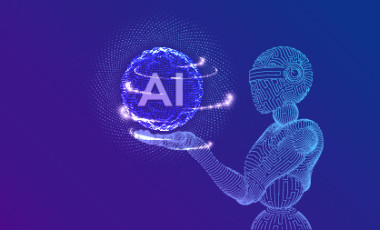From BERT to RoBERTa: A Guide to the Top Alternatives to GPT
Launched in 2020, the Generative Pre-Trained Transformer 3 (or GPT-3 for short) is making a splash in the news with its accomplished AI model. Businesses have been said to utilize GPT-3 for diverse text-generation-based tasks like text summarization, machine translations, question-answering, and more. With the release of GPT-4, Open AI put its foot down as a leader in the disruptive AI domain.
Generative AI has positively transformed business operations, leading enterprises to better efficiencies and higher quality throughput.
GPT emerges as the epitome of what generative AI can do with learning in a handful of iterations—from writing stories to holding conversations naturally with humans.
With that said, with OpenAI still be the leader, there are other alternatives you can check out.
We have compiled an interesting list of dark horses—AI models worth a look. To ensure that, OpenAI is not the only option available.
Top 8 Alternatives to GPT
If you think GPT isn't quite the right AI model for your enterprise, here are a few other options you can explore:
1. BERT
Bidirectional Encoder Representations from Transformers, or BERT for short, is an AI model published by researchers at Google AI Language. By generating exceptional results across diverse Natural Language Processing (NLP) tasks (like conversing with humans and telling stories), it surprised humanity and caused a buzz.
Key Features
- Language modelling using the bidirectional training of Transformer
- A deeper understanding of language context because of bidirectional architecture
- The innovative technique of Masked LM, which allows better training of AI models
Pros
- BERT is a great tool for task-specific models
- You can fine-tune the metrics for immediate use
- Frequent updates drastically improve model accuracy
Cons
- BERT has a compute-intensive inference time
- More need for computational resources increases the cost of use
2. RoBERTa
RoBERTa is an optimized version of BERT. The key hyperparameters have been modified to perform better, in addition to basing its training on a larger dataset than BERT.
Key Features
- Performance of diverse NLP tasks is better than BERT
- Can function as a base model for other NLP models
- Dynamic masking patterns generated for each dataset
Pros
- RoBERTa has excellent performance (better than BERT)
- It can be applied to any language
- Pre-training on a huge dataset makes it highly versatile
Cons
- The training time is longer
3. MUM
MUM stands for Multitask Unified Model. This AI model is a step further than BERT and aims to solve more complex user search queries.
Key Features
- Text-to-text T5 framework
- Language generation
- More comprehensive than any other AI in the niche
Pros
- Multimodal understanding enables MUM to understand media other than text
- Contextual and advanced results that don’t depend on direct answers
Cons
- Higher competition to rank in search
4. Wu Dao 2.0
In competition with the likes of GPT, MUM, and LaMDA, the Beijing University of Artificial Intelligence has launched Wu Dao 2.0, an AI platform with a flabbergasting 1.73 trillion parameters. It is arguably the largest neural network in the world.
Key Features
- It is a multimodal platform
- The model is trained with FastMoE (Mixture of Experts)
Pros
- The MoE doesn’t require any specific hardware, which makes it more democratic
- It supports parallel training at large scales
Cons
- The cost can shoot up because of the involvement of Mega data
5. LaMDA
LaMDA is a Google product that aims to hold natural conversations with its subjects. It is built on the same Transformer architecture as GPT-3.
Key Features
- Ideal AI model for dialogue-based apps
- Works with multiple responses to a question to output the best option
Pros
- It is a single model and doesn’t need retraining
- Well suited for NLP models based on AI
Cons
- Without fine-tuning the pre-trained model, it can generate offensive responses
6. Open AI. Gym
The OpenAI Gym library provides access to an open-source library, which contains standardized environments you can use.
Key Features
- It functions through an “Environment-Agent” arrangement that lets you use various environments
- Simulator implementation lets you train your Agent in the environment of your choice
Pros
- It is open source and consists of diverse simulation environments
- You can train your ML algorithms, test, and compare them
Cons
- It is a rule-intensive platform if desired results are to be achieved
7. Macaw
Macaw is built on the T5 pre-trained language model and is an excellent alternative to GPT for versatile and generative Q&A.
Key Features
- Outperforms GPT-3 by over 10% 1
- The model is trained on Google Cloud TPU, saving a lot of expense and time
Pros
- Significantly smaller but more effective than GPT-3 (11 billion parameters v/s 175 billion)
- Available to the public for free
Cons
- It has its limitations in answering questions with common-sense reasoning
8. XLNet
XLNet is modeled on an autoencoder language model. It builds on the same concepts as the GPT family but performs better.
Key Features
Leverages the permutation method for generating accurate results
The model focuses on pre-training rather than fine-tuning
Pros
XLNet uses forward and backward contexts simultaneously
The training methodology is better than competitors
Has better computational power
Cons
Since pretraining doesn’t account for masking in predictions, there may be discrepancies in results.
Wrapping Up
as AI continues to advance and shape our world, it is crucial to promote healthy competition and ensure that alternatives exist to avoid the dominance of a single player. While GPT models have been at the forefront of natural language processing and generation, several other options offer unique features and benefits.
By showcasing 8 GPT alternatives in this article, we hope to provide readers with a diverse range of options to choose from. Each of these models offers its own advantages and limitations, and users can select the one that best fits their needs and preferences.
As AI technology evolves, we can expect even more advancements and alternatives to emerge, fostering innovation and competition in the field. Ultimately, the availability of diverse and robust AI models is essential to ensure that we can leverage AI's full potential for society's betterment. You can make an informed choice depending on the goals and focus of your business operations.



